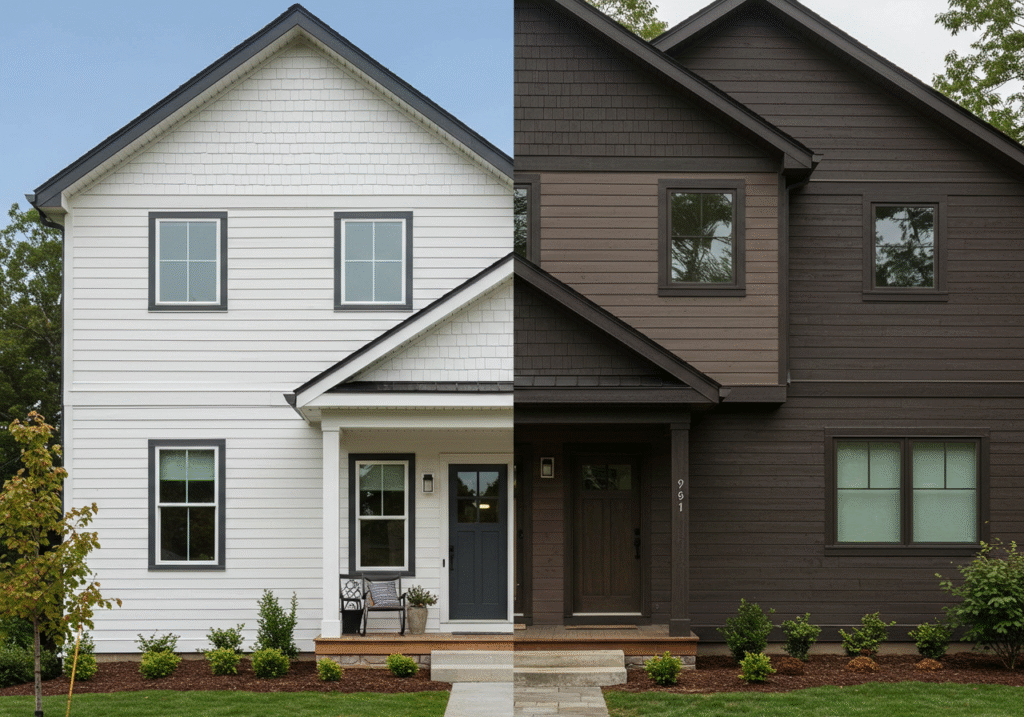Introduction:
Contents
Split-level homes, particularly those built in the 1960s and 1970s, have a unique architectural style that presents both opportunities and challenges when it comes to exterior upgrades. Siding plays a crucial role in transforming the curb appeal of these homes, allowing homeowners to refresh dated exteriors while maintaining the structural integrity of the building. As of 2024, exterior home renovations are seeing a surge in popularity, driven by advancements in siding materials and design trends that prioritize both aesthetics and sustainability.
This article explores the latest siding ideas for split-level homes, offering insights into materials, design options, and remodel ideas for professionals working in home renovation.
Current trends and 2024 insights for split-level home exteriors
In 2024, there has been an increased focus on eco-friendly siding materials and mid-century modern design influences. Homeowners are leaning toward sustainable options like fiber cement, reclaimed wood, and engineered wood. Additionally, color choices are shifting towards earth tones, greens, and neutral shades, reflecting a growing desire for homes to blend into natural surroundings.
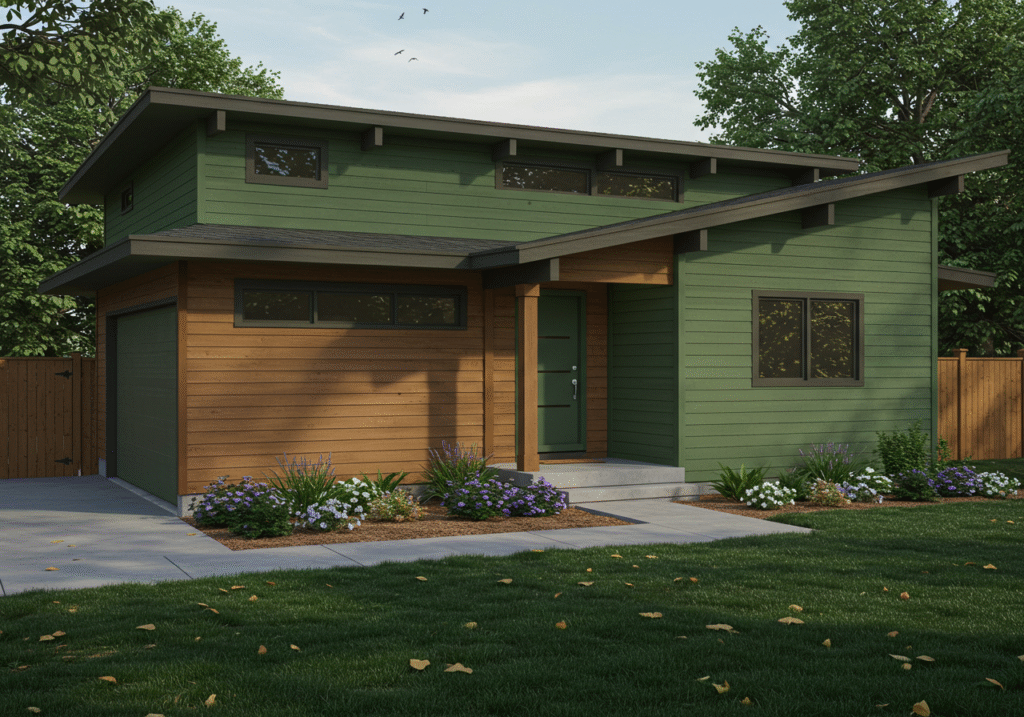
Split-level homes, often considered outdated, are receiving significant attention in exterior renovations. Modernizing these homes while preserving their architectural character is a key trend. Split-level exterior before-and-after transformations are becoming common, with many renovations focused on creating a harmonious blend of contemporary design elements with the home’s original structure.
Split-level siding ideas
- Vertical and horizontal siding combinations. One of the most popular ideas for split-level siding in 2024 is the use of mixed vertical and horizontal siding. This method adds visual interest by breaking up the monotony of a single siding direction. Vertical board and batten siding can be used on the upper sections of the house, while horizontal lap siding provides contrast on the lower levels. This combination works particularly well for 1970 split-level exterior remodels, adding depth and a modern touch to mid-century homes.

- Natural wood siding is making a comeback in 2024, especially in mid-century modern split-level exterior designs. Wood siding offers a warm, organic feel that complements the clean lines of split-level architecture. To keep it eco-friendly, many professionals are opting for reclaimed wood or wood treated with eco-friendly preservatives. This option is ideal for clients seeking a natural, rustic look that blends seamlessly with outdoor environments. When combined with large, energy-efficient windows, the natural wood enhances both the beauty and sustainability of the home.

- Fiber Cement Siding For those who prioritize durability and low maintenance, fiber cement siding remains a top choice. Available in a wide range of colors and textures, fiber cement can mimic the appearance of wood, stone, or stucco while offering excellent resistance to weather, pests, and fire. Fiber cement is particularly suitable for 1960 split-level exterior remodels, where long-lasting materials are crucial to maintaining the home’s structural integrity over time. Many professionals recommend pairing fiber cement siding with updated roofing and window trim for a cohesive exterior makeover.
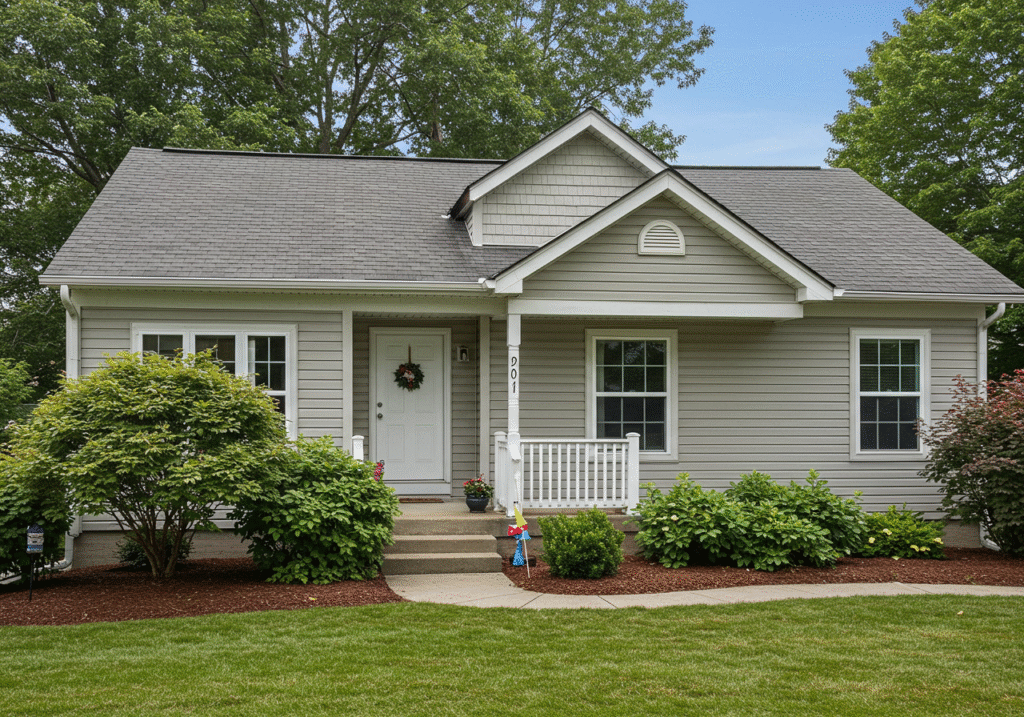
- Mid-Century Modern Aesthetic The mid-century modern look has been a favorite in home design for several years, and in 2024, it continues to influence split-level exterior makeovers. Clean lines, flat planes, and minimalistic designs are central to this style. Split-level homes built in the 1960s and 1970s can benefit from siding that reflects these elements. Horizontal lap siding in neutral colors like white, gray, or beige works well for this aesthetic, especially when combined with bold accent colors on doors or trim. Adding large windows or glass panels can further enhance the mid-century vibe, creating a seamless connection between the indoors and outdoors.
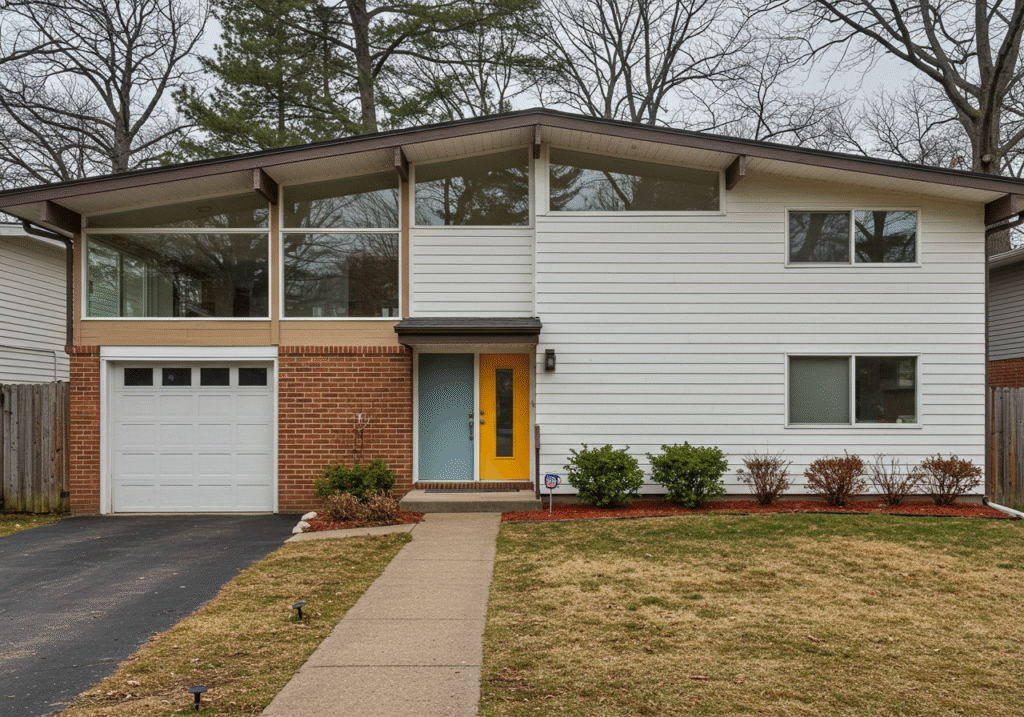
Siding colors and exterior paint ideas
- Bold Neutrals and Natural Tones Siding color trends in 2024 are shifting away from bright, bold hues toward more subdued, earthy tones. Neutral colors like charcoal gray, sage green, and soft beige are popular choices for split-level homes. These tones not only modernize the home’s appearance but also offer a timeless look that can withstand changing design trends. For clients interested in split-level exterior paint ideas, suggest painting the siding in a muted color while using brighter, contrasting shades for the door or window frames to add character.

- Two-Tone Siding Two-tone siding is another excellent way to add dimension and personality to a split-level home. By using two complementary shades, you can visually separate the different levels of the house. This technique works well for highlighting architectural features, such as roof overhangs or gable ends. Professionals often suggest lighter colors for the upper sections of the house and darker tones for the lower areas, creating a balanced, grounded look.

Split-level extensions and additions
Many homeowners are looking to expand their split-level homes by adding extensions. In 2024, professionals are increasingly opting for siding that seamlessly blends new additions with the existing structure. For example, split-level extension ideas often involve the use of fiber cement or engineered wood siding in a style that matches or complements the original siding.
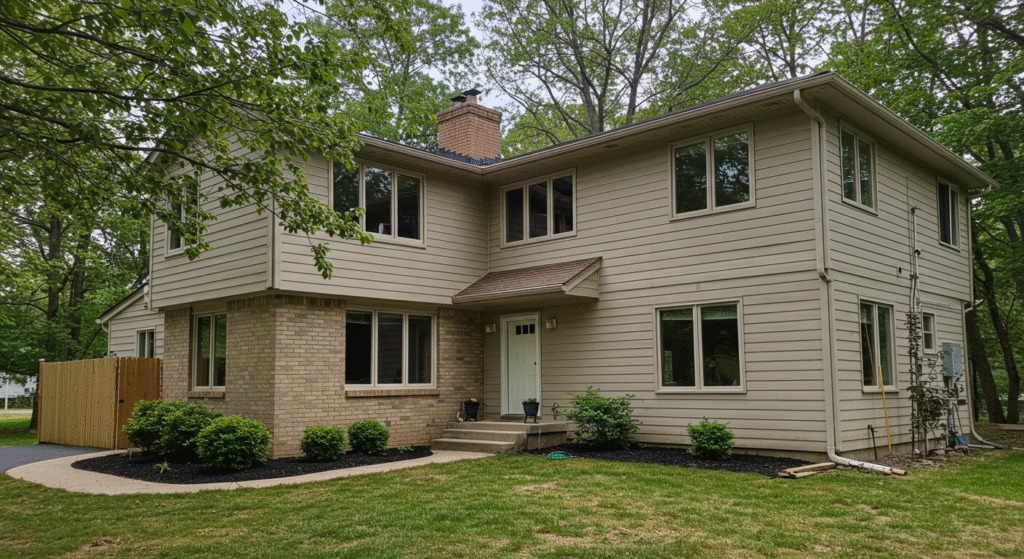
For larger remodels, siding materials like composite wood, metal, and fiber cement are favored for their durability and ability to maintain a cohesive look. These materials are versatile enough to be used on both the existing structure and any new extensions, ensuring that the home maintains its aesthetic integrity after the remodel.
Siding installation: Key considerations for 2024
When installing new siding on a split-level home, professionals need to consider several factors:
- Energy efficiency: With growing concerns about energy costs, many homeowners are looking for siding that offers better insulation. Insulated vinyl or fiber cement siding can help reduce energy bills by improving the home’s thermal performance.
- Sustainability: Environmentally conscious clients may prefer siding materials with a low carbon footprint. In 2024, there is an increased demand for sustainable siding options like reclaimed wood or recycled metal.
- Budget: While some siding materials can be costly upfront, they often pay off in terms of durability and maintenance. Fiber cement and engineered wood, for instance, offer long-term value for homeowners who are willing to invest in quality materials.
Conclusion:
Siding ideas for split-level homes are evolving to meet modern needs, with an emphasis on sustainability, durability, and aesthetics. Whether it’s a mid-century modern split-level exterior makeover or a 1970s split-level remodel, the right siding choice can transform a dated home into a contemporary masterpiece. Professionals should focus on blending modern siding materials and design trends with the unique architecture of split-level homes to create visually appealing and energy-efficient exteriors.
By staying updated on the latest siding materials and design ideas, professionals can provide their clients with solutions that enhance both the beauty and value of their homes.

